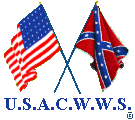
|
U. S. CIVIL WAR
PHOTOGRAPHS
|

|
REPORTS OF GENERAL ROBERT E. LEE
(PAGE 3 OF 5)
Source: O.R.-- Series I--Volume XI/2 (With Editing - Ed)
| |
BATTLE OF SAVAGE STATION.
Early on the 29th Longstreet and A. P. Hill were ordered to recross the
Chickahominy at New Bridge, and move by the Darbytown to the Long Bridge road.
Maj. R. K. Meade and Lieut. S. R. Johnston, the Engineers, attached to General
Longstreet's division, who had been sent to reconnoiter, found, about sunrise, the
work on the upper extremity of the enemy's line of intrenchments abandoned.
Generals Huger and Magruder were immediately ordered in pursuit, the former by the
Charles City road, so as to take the Federal Army in flank, and the latter by the
Williamsburg road, to attack its rear. Jackson was directed to cross at Grapevine
Bridge and move down the south side of the Chickahominy. Magruder and Huger found
the whole line of works deserted and large quantities of military stores of every
description abandoned or destroyed.
The former reached the vicinity of Savage Station about noon, where he came upon
the rear guard of the retreating army. Being informed that the enemy was advancing,
he halted and sent for re-enforcements. Two brigades of Huger's division were
ordered to his support, but subsequently withdrawn, it being apparent that the
force in Magruder's front was covering the retreat of the main body. Jackson's
route led to the flank and rear of Savage Station, but he was delayed by the
necessity of reconstructing Grapevine Bridge.
Late in the afternoon Magruder attacked the enemy with one of his divisions and
two regiments of another. A severe action ensued and continued about two hours,
when it was terminated by night.
The troops displayed great, gallantry and inflicted heavy loss upon the enemy;
but, owing to the lateness of the hour and the small force employed, the result
was not decisive, and the enemy continued his retreat under cover of darkness,
leaving several hundred prisoners, with his dead and wounded, in our hands.
At Savage Station were found about 2,500 men in hospital and a large amount of
property. Stores of much value had been destroyed, including the necessary medical
supplies for the sick and wounded. But the time gained enabled the retreating
column to cross White Oak Swamp without interruption and destroy the bridge.
BATTLE OF FRAZIER'S FARM.
Jackson reached Savage Station early on the 30th. He was directed to pursue the
enemy on the road he had taken and Magruder to follow Longstreet by the Darbytown
road. As Jackson advanced he captured such numbers of prisoners and collected so
many arms that two regiments had to be detached for their security. His progress
was arrested at White Oak Swamp. The enemy occupied the opposite side and
obstinately resisted the reconstruction of the bridge.
Longstreet and A. P. Hill, continuing their advance on the 30th, soon came upon
the enemy strongly posted across the Long Bridge road, about 1 mile from its
intersection with the Charles City road. Huger's route led to the right of this
position, Jackson's to the rear, and the arrival of their commands was awaited
to begin the attack.
On the 29th General Holmes had crossed from the south side of James River with
part of his division.
On the 30th, re-enforced by General Wise with a detachment of his brigade, he
moved down the river road and came upon the line of the retreating army near
Malvern Hill. Perceiving indications of confusion, General Holmes was ordered
to open upon the column with artillery. He soon discovered that a number of
batteries, advantageously posted, supported by an infantry force superior to his
own and assisted by the fire of the gunboats in the James River, guarded this
part of the line.
Magruder, who had reached the Darbytown road, was ordered to re-enforce Holmes,
but being at a greater distance than had been supposed, he did not reach the
position of the latter in time for an attack.
Huger reported that his progress was obstructed, but about 4 p.m. firing was heard
in the direction of the Charles City road, which was supposed to indicate his
approach. Longstreet immediately opened with one of his batteries to give notice
of his presence. This brought on the engagement, but Huger not coming up, and
Jackson having been unable to force the passage of White Oak Swamp, Longstreet
and Hill were without the expected support. The superiority of numbers and
advantage of position were on the side of the enemy.
The battle raged furiously until 9 p.m. By that time the enemy had been driven
with great slaughter from every position but one, which he maintained until he was
enabled to withdraw under cover of darkness.
At the close of the struggle nearly the entire field remained in our possession,
covered with the enemy's dead and wounded. Many prisoners, including a general of
division, were captured, and several batteries, with some thousands of small-arms,
taken. Could the other commands have co-operated in the action the result would
have proved most disastrous to the enemy.
After the engagement Magruder was recalled to relieve the troops of Longstreet and
Hill. His men, much fatigued by their long, hot march, arrived during the night.
|
|
|
PAGE 4
 >
Civil War Photos
>
Richmond - Outlying Area
>
Lee Reports
>
2
>
3
>
4
>
5
>
Civil War Photos
>
Richmond - Outlying Area
>
Lee Reports
>
2
>
3
>
4
>
5
Copyright 2011, 2012 by Content Team, all rights reserved.
|
|



